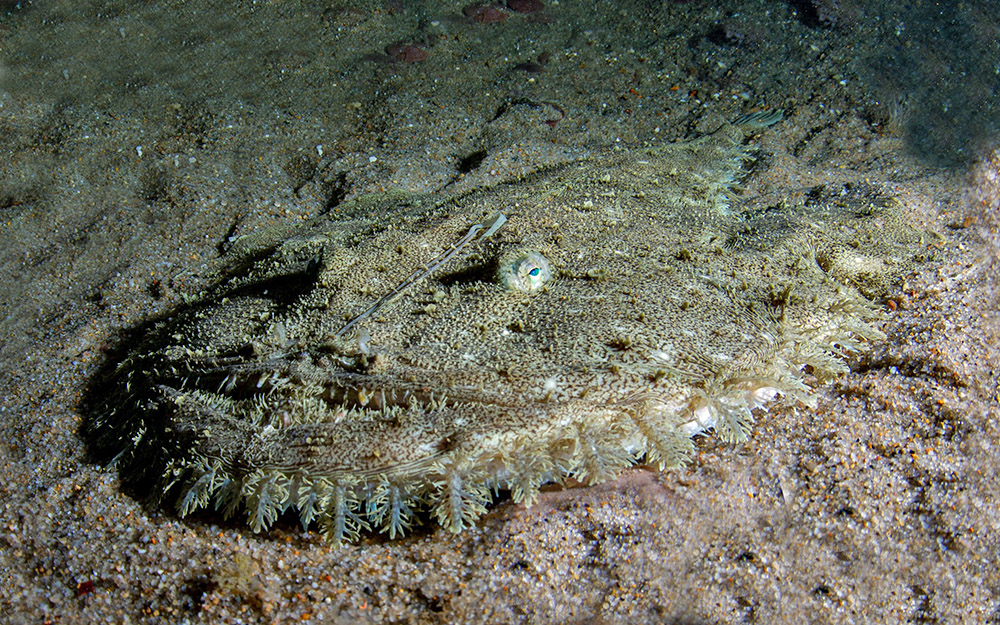American anglerfish
(Lophius americanus)

Classification
General data
Description
The American anglerfish is unique in its appearance and has no relatives with which it can be confused in the areas where it is caught. A fish of lesser importance than other food fish in the region, such as cod, its various names suggest its unusual appearance - a very large mouth, more than twice the width of the tail, with several spines and strong teeth, enabling it to snare prey larger than itself. The body is flattened dorsoventrally to allow it to hide on the sea floor. The front of the head carries erectile spines, the primary of which has a flattened end to resemble a small organism or piece of algae. The pectoral fins are like wide fans behind the head, and the pelvic fins are like small hands below the head.
The American anglerfish can grow to a length of 140 cm (55 in), but 100 cm (39 in) is a more usual size. The greatest recorded weight is 22.6 kg (50 lb) and the greatest recorded age is 30 years.
Distribution and habitat
The American anglerfish is found in the western Atlantic from Newfoundland and Quebec south to northern Florida, but is commoner in the more northerly parts of its range, north of Cape Hatteras. It is a demersal fish living close to the seabed at depths down to about 2,000 feet (610 m). It is found on sand bottoms, gravel, shell fragments, mud and clay.










